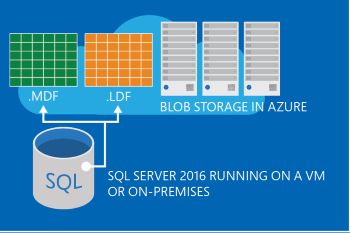SQL Server and Azure - hybrid partitioning - a low-cost solution to retain your data
It's already a fact: cloud is here to stay. As time goes by, we have a better understanding of how it really works as well as its real pros and cons. But here is the most important lesson: We don't need to completely move to the cloud in one shot. The complete "cloud-shift" may never happen, depending on the business requirements, future plans and business requirements. The cloud may act as a support for specific on-premises needs, creating a hybrid system which takes the best from both on-premises and from the cloud. This mix results in a system where you have control over the resources, and the advantage of cloud scalability. The cost constraint is the same as maintaining your systems on-premises. Microsoft SQL Server and Microsoft Azure offer different options to integrate an instance on-premises. In this article I will look at the "Hybrid Partitioning" capability.
What is hybrid partitioning? Hybrid partitioning is not an official Azure service or even a SQL Server new feature. This is just a creative way to take advantage of some capabilities from both SQL Server and Azure:
 The price is the advantage here, as it won't provide the same performance as Stretch Database promises. Also, the data moved to Azure is still going to be included in the maintenance (backups, index operations, ...), unless you customize your scripts to better fit with this strategy. Here are few use cases where this would be useful:
The price is the advantage here, as it won't provide the same performance as Stretch Database promises. Also, the data moved to Azure is still going to be included in the maintenance (backups, index operations, ...), unless you customize your scripts to better fit with this strategy. Here are few use cases where this would be useful:
 By using this method, it would be possible to keep just the most current data in the local server, and move the cold data, which probably won't be too much requested, in Azure. It's also possible to move the entire table to Azure, and this is simpler... The steps are:
By using this method, it would be possible to keep just the most current data in the local server, and move the cold data, which probably won't be too much requested, in Azure. It's also possible to move the entire table to Azure, and this is simpler... The steps are:
- Azure storage
- SQL Server table partitioning
- SQL Server support for data & log files in Azure
 The price is the advantage here, as it won't provide the same performance as Stretch Database promises. Also, the data moved to Azure is still going to be included in the maintenance (backups, index operations, ...), unless you customize your scripts to better fit with this strategy. Here are few use cases where this would be useful:
The price is the advantage here, as it won't provide the same performance as Stretch Database promises. Also, the data moved to Azure is still going to be included in the maintenance (backups, index operations, ...), unless you customize your scripts to better fit with this strategy. Here are few use cases where this would be useful:
- Historical data must be retained for X years, but this is not frequently used.
- Because of disk space constraints, old data is being purged to free up space.
- Create an Azure Storage account and container (more info here)
- Create a new database Filegroup (or multiple ones)
- Create one or more files inside of the created Filegroup, pointing to Azure Storage
- Create a partition scheme and function
- Enable the partitioning on the table
 By using this method, it would be possible to keep just the most current data in the local server, and move the cold data, which probably won't be too much requested, in Azure. It's also possible to move the entire table to Azure, and this is simpler... The steps are:
By using this method, it would be possible to keep just the most current data in the local server, and move the cold data, which probably won't be too much requested, in Azure. It's also possible to move the entire table to Azure, and this is simpler... The steps are:
- Create an Azure Storage account and container (more info here)
- Create a new database Filegroup
- Create a table referring the new Filegroup - the default is the PRIMARY Filegroup
- You can also move the table from the current filegroup to the new one



